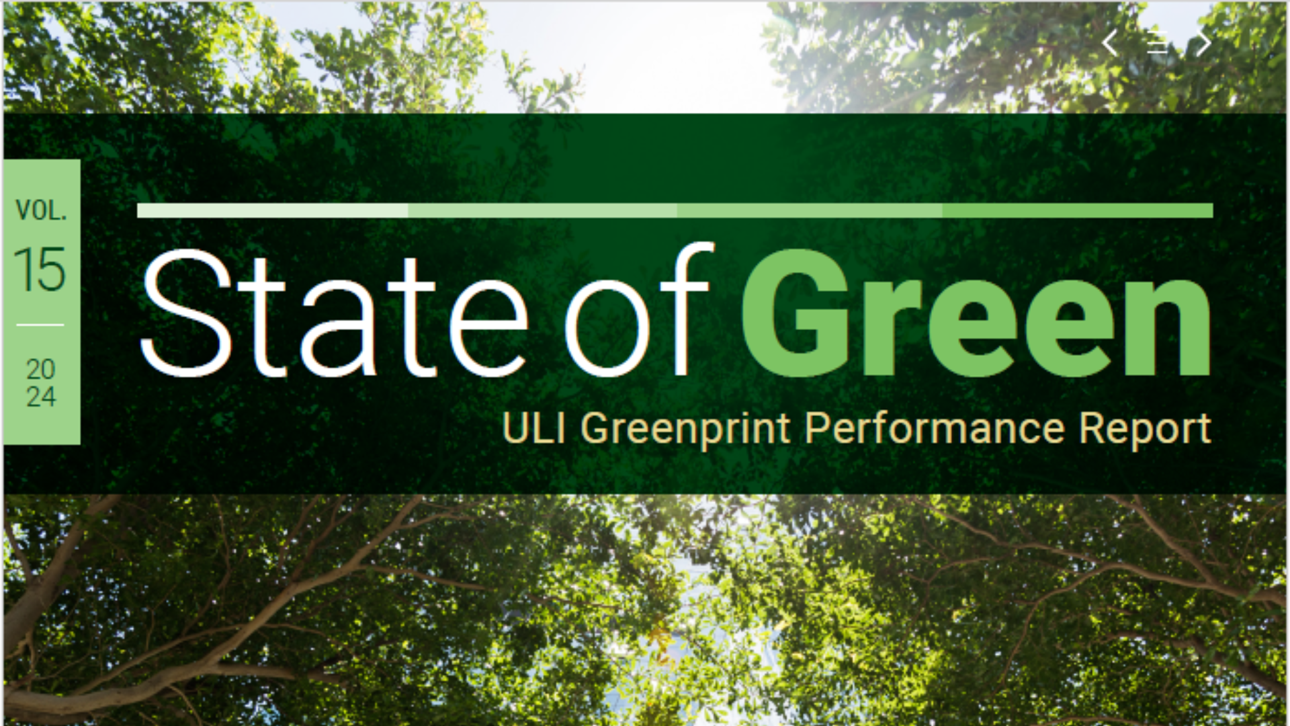State of Green: Greenprint Performance Report, Volume 15

A quick history lesson: the first Greenprint Carbon Index (now the annual State of Green report) was published in 2010. The report described Greenprint as “a catalyst for change by taking meaningful, immediate, and measurable actions to generate solutions that improve energy efficiency while increasing property values,” and it launched a benchmark that started with the collective emissions from 14 real estate member portfolios across 600 properties. From the start, this global alliance was committed to reducing emissions in its collective portfolio and in the broader real estate industry.
Fast forward to today: a lot has changed in the past 14 years. The global real estate industry has seen a proliferation of regulations, certifications, and reporting frameworks driving the industry to decarbonize. Political and economic headwinds have brought scrutiny to environmental, social, and governance (ESG) programs. Owners and developers are increasingly expected to take action on reducing their Scope 3 emissions, including tenant emissions and embodied carbon. Through all these changes, ULI Greenprint members have continued to lead the way globally on decarbonization and demonstrate that the business case for climate action is strong.
In 2023, the collective Greenprint Community, covering 130+ companies and 25,000+ properties, reported:
- -6.3% Carbon emissions
- -2.7% Energy Use
- -1.9% Water Use
- -0.8% Landfill Waste
Report Summary: A quick history lesson: the first Greenprint Carbon Index (now the annual State of Green report) was published in 2010. The report described Greenprint as “a catalyst for change by taking meaningful, immediate, and measurable actions to generate solutions that improve energy efficiency while increasing property values,” and it launched a benchmark that started with the collective emissions from 14 real estate member portfolios across 600 properties. From the start, this global alliance was committed to reducing emissions in its collective portfolio and in the broader real estate industry.
Fast forward to today: a lot has changed in the past 14 years. The global real estate industry has seen a proliferation of regulations, certifications, and reporting frameworks driving the industry to decarbonize. Political and economic headwinds have brought scrutiny to environmental, social, and governance (ESG) programs. Owners and developers are increasingly expected to take action on reducing their Scope 3 emissions, including tenant emissions and embodied carbon. Through all these changes, ULI Greenprint members have continued to lead the way globally on decarbonization and demonstrate that the business case for climate action is strong.
In 2023, the collective Greenprint Community, covering 130+ companies and 25,000+ properties, reported:
- -6.3% Carbon emissions
- -2.7% Energy Use
- -1.9% Water Use
- -0.8% Landfill Waste


